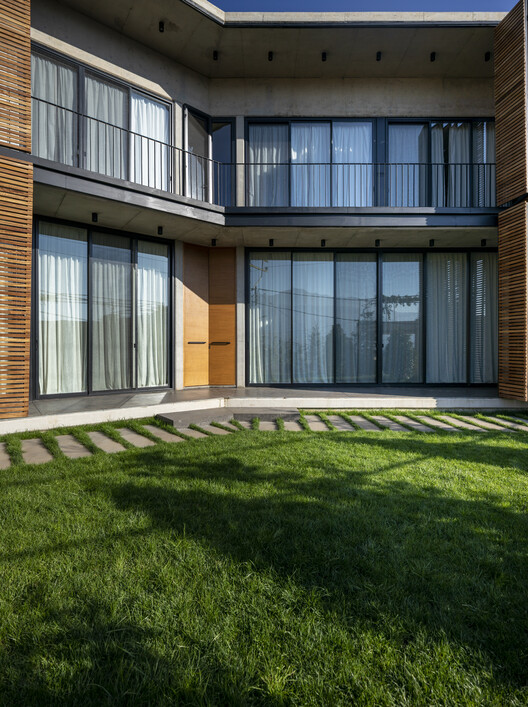
-
Architects: platau
- Area: 300 m²
- Year: 2021
-
Photographs:Wissam Chaaya
-
Manufacturers: Duravit, Blatt Chaaya, Sidem
-
Lead Architect: Sandra Frem

Text description provided by the architects. The architecture of Eresta House emerges from paradoxical limitations. Set in the breath-taking landscape of Akoura and Nahr Ibrahim, the site’s immediate surroundings are ad-hoc buildings that limit its exposure to the scenery. Built on the remnants of an ancestral home that was attached by a party wall to a neighboring building, the client asked to rethink the shared party wall condition in line with a new autonomous architecture, the need for privacy and at the same time exposure to the views, the need for security during their absence and complete transparency to the outdoors when the house is inhabited.

The site slopes North-West towards the Nahr Ibrahim valley. Its angle allows for positioning the house in such a way that the front is open to the valley view whereas the other sides of the house are embedded in the landscape. A V-Shaped massing reorients the house away from the adjacent context and towards the scenic sightlines, creating a lower level of living spaces that open to the front garden and the valley and an upper level of bedrooms that are open to the front and can extend to a rear courtyard, with an outlook to the cliffs above the site.



The concrete shell of the house consists of a double-layer wall with specific openings, creating a thermal mass on the South, East, and North that works on insulation and a completely glazed façade on the front which gives access to each level to balconies in dialogue with the valley view. The glazed front is complemented by a paneling system of steel frames and wood louvers that work on shading and security when closed, and that provide uninterrupted transparency when open. The entrance and main staircase are situated at the hinge of the V-shaped volume, topped by a skylight that acts as a wind chimney and triggers cross ventilation through the house.



In contrast with the autonomous form of the concrete volume, a stone enclosure wraps the site in one continuous outline, starting and ending at the site entry point. Built with stones that were extracted during excavation works, this enclosure reconciles the different topographic levels in sloping contours and blends the project’s edges with its surroundings through its materiality. The massing provides self-shaded outdoor spaces that dictate cycles of use throughout the day. A sequence of outdoor spaces deploys between the house and the stone enclosure, defining different relationships with the outside at each level. This sequence extends to the roof of the house, culminating in a panoramic deck that overlooks the 360 degrees view.





























